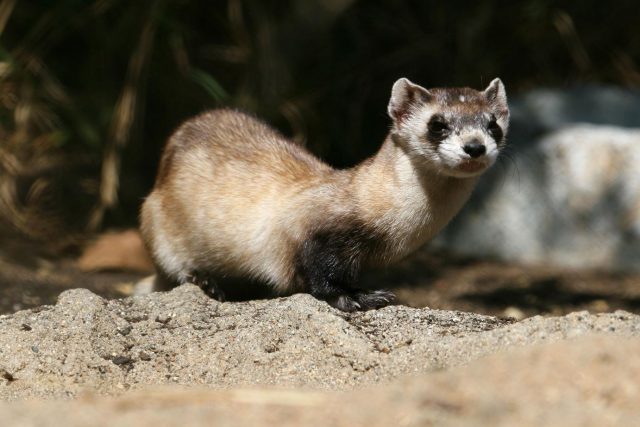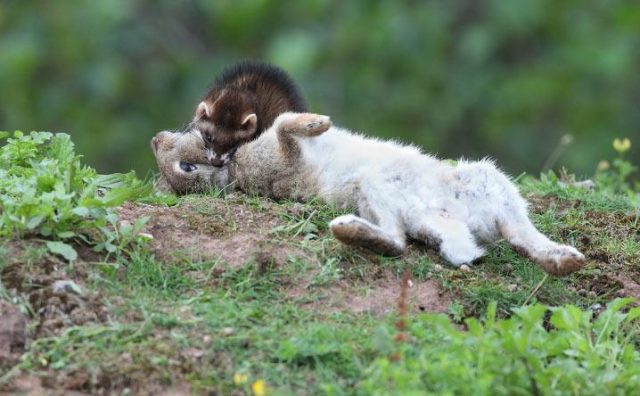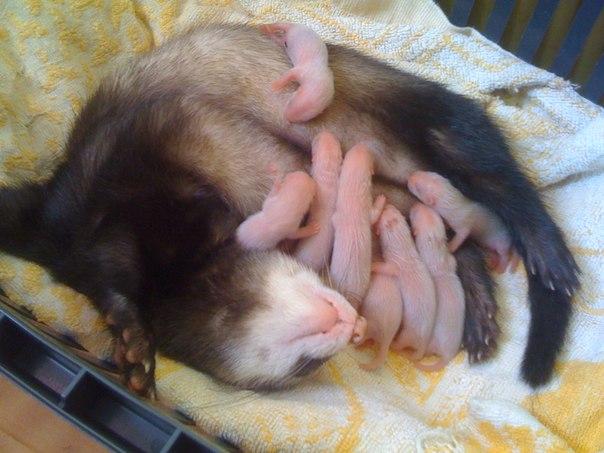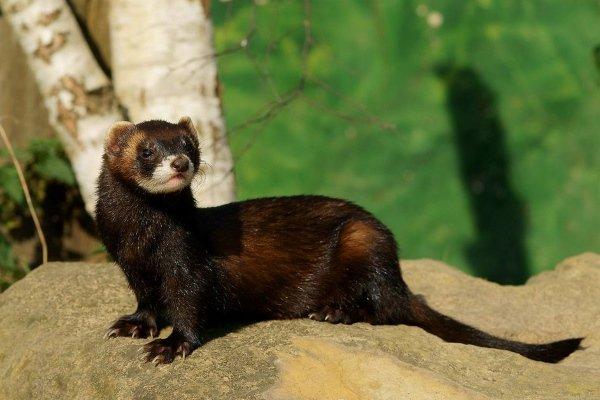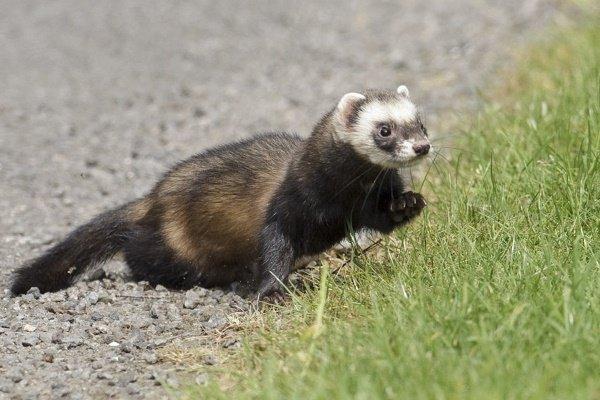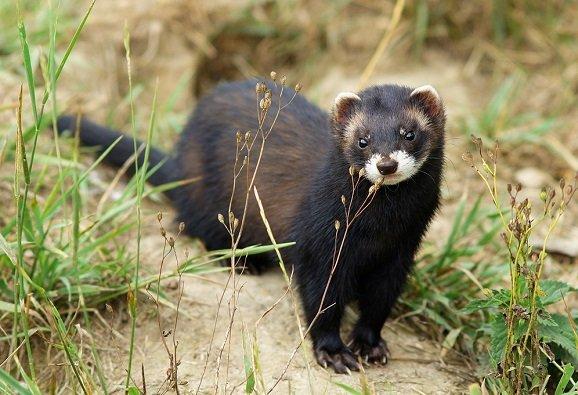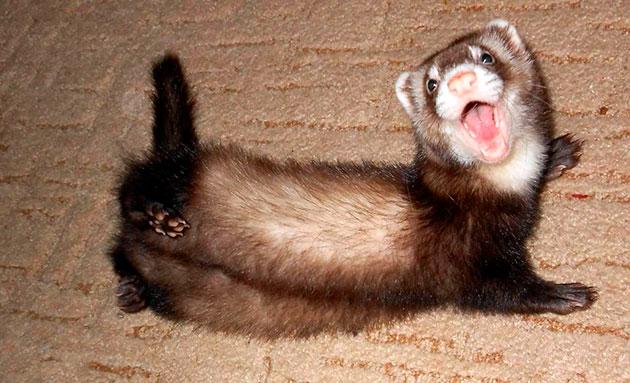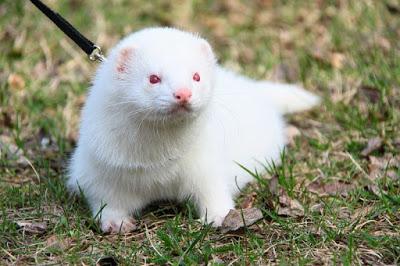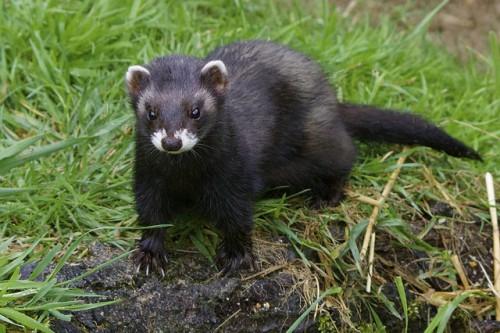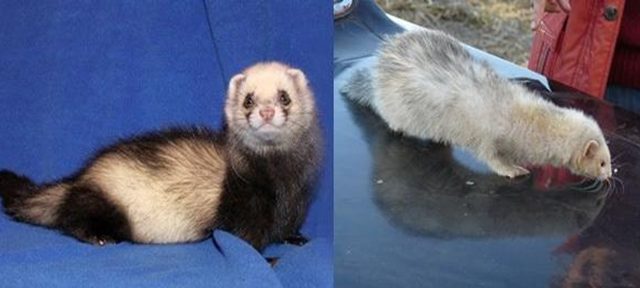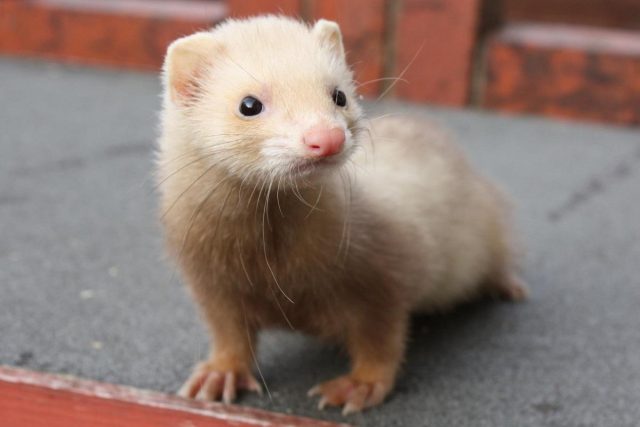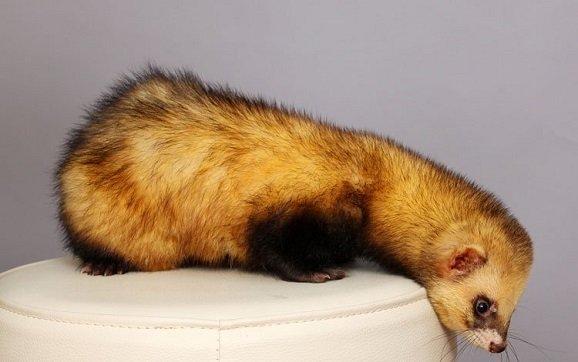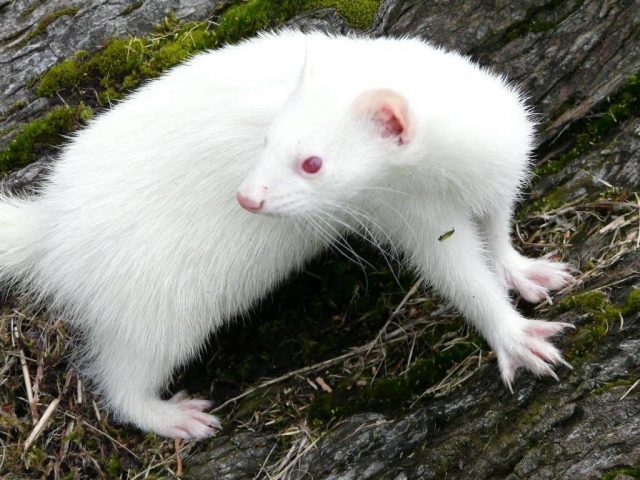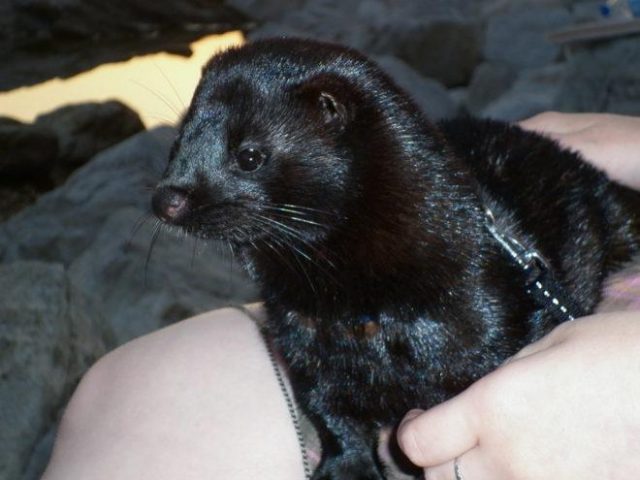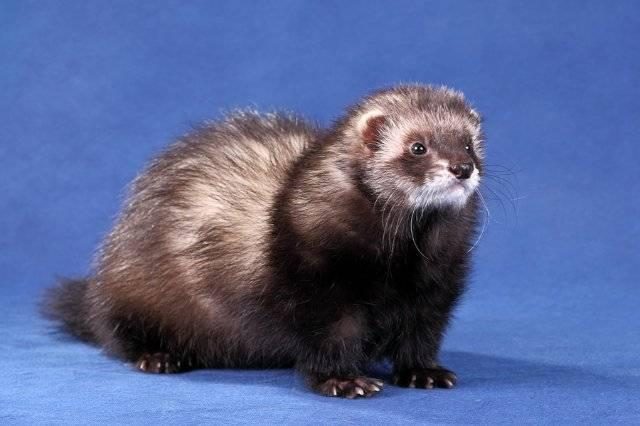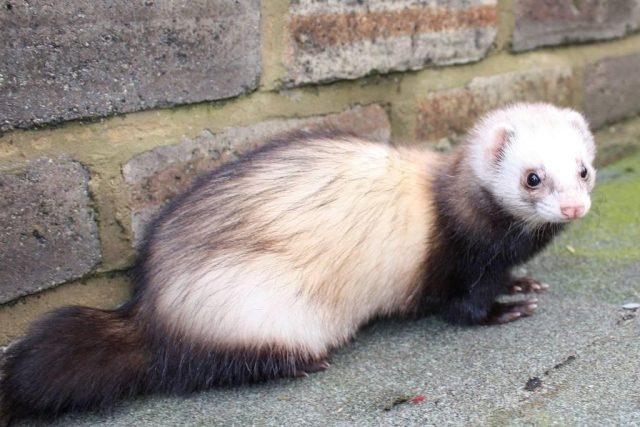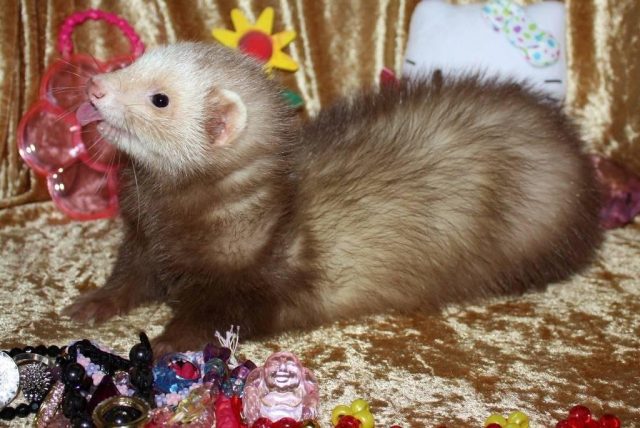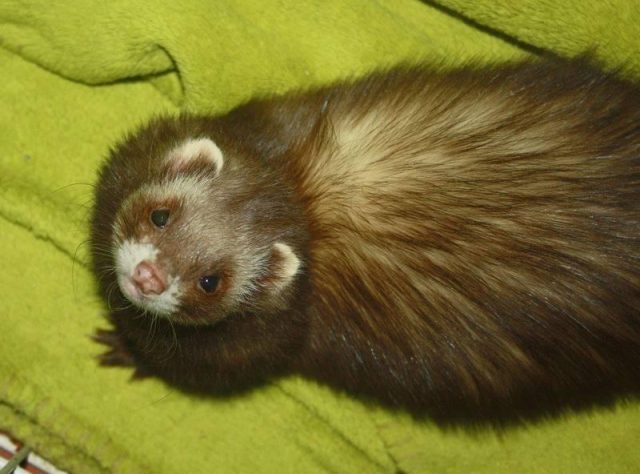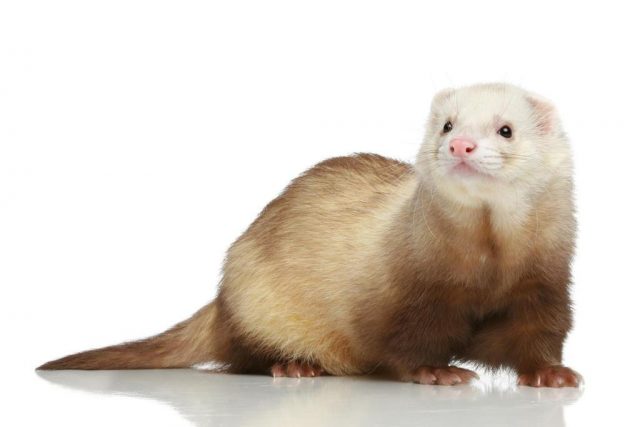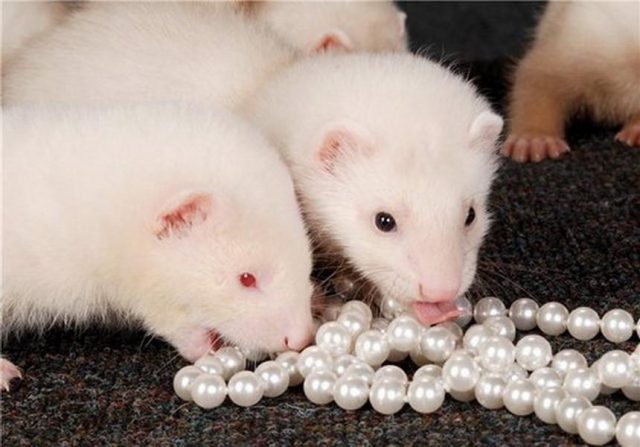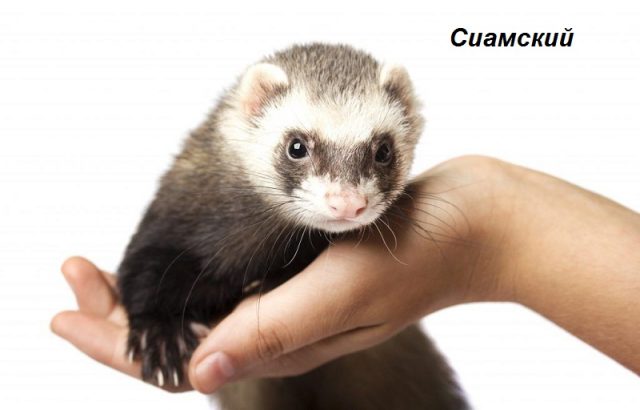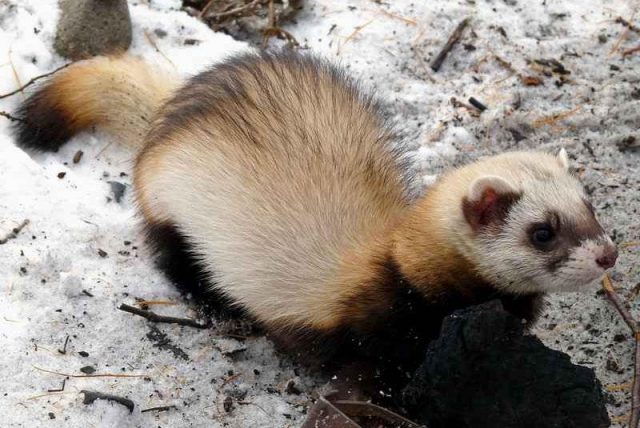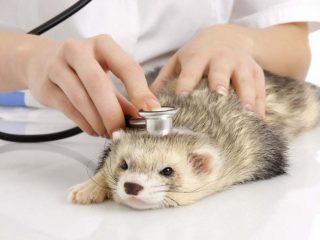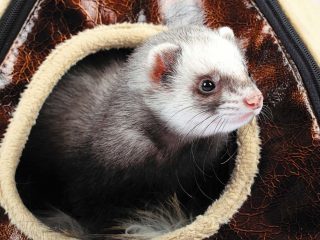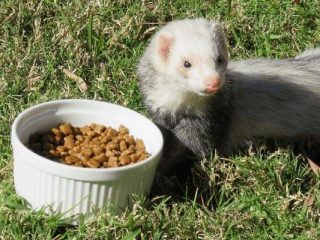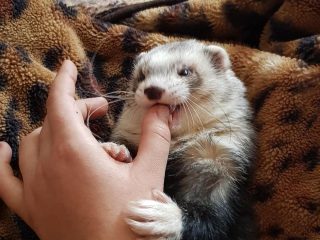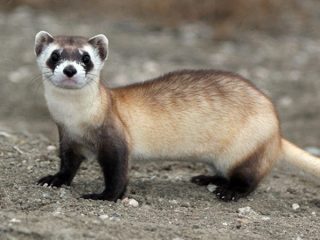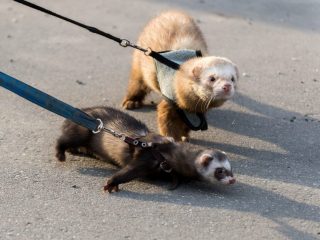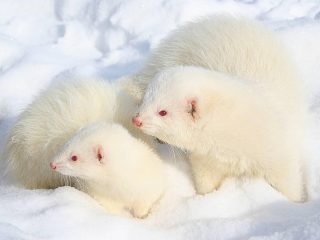Content
Many are deceived by what a ferret looks like: a cute and funny animal in the wild is a formidable and dexterous predator. And, despite its small size, it can be quite dangerous. There are many varieties of this animal, a classification with photographs of the main breeds and varieties will help you understand them.
Description of ferrets
These agile, fast, mammalian predators live throughout Asia, Europe and North America. They are distributed everywhere: from the steppe, forests, mountains, and also near human habitation. The basis of the diet of trochees are birds and bird eggs, rats, mice, gophers, snakes, and there are also frequent cases of destructive raids of small predators on chicken coops and rabbit coops. That's why wild ferrets are not particularly popular among farmers. Below is a photo of a ferret that defeated a larger animal without much difficulty:
However, if the hunt was unsuccessful and it was not possible to catch worthy prey, the ferret is content with grasshoppers, snails, fruits and is even able to dive into a pond for fish.
All ferrets, regardless of breed, hunt at night, so they have a very well developed sense of smell and hearing. They prefer to eat only freshly caught prey: the only thing that can force an animal to eat carrion is the inability to hunt (illness or damage to the limbs).
What they look like
According to the description, the ferret is a small animal, very flexible and incredibly graceful. The length of its body is 42 - 45 cm in females, males grow up to 50 - 60 cm, with a significant part of the length being a fluffy tail (up to 18 cm). The animal has muscular legs that are disproportionately short in relation to the body (the hind legs are within 6–8 cm), on which it moves by jumping. Thanks to its elongated claws and powerful muscles, this predator is considered a good swimmer and easily climbs trees in search of profit.
The ferret's head is oval, with a slightly elongated muzzle, flattened on the sides, the color of the fur on which forms a pattern reminiscent of a mask. The animal's ears are small, low, with a wide base, the eyes are also small, shiny, most often brown in color.
Features of the ferret's appearance are the same for all species; the differences lie in fur color, size and body weight. Depending on the breed, the weight of an adult ferret varies from 0.3 to 2.0 kg.
What do baby ferrets look like?
Ferret cubs - puppies are born a month and a half after conception, helpless, almost bald and blind. At first, they require constant attention from the mother, but they develop quickly and after two months they begin to eat a little meat.
One litter usually produces from 4 to 12 cubs.
What species and family does the ferret belong to?
This amazing mammal belongs to the genus of weasels and ferrets and is a representative of the Mustelidae family: just like a marten or a mink. The similarity between members of the family is so great that, for example, a ferret and a mink can even have joint offspring, called honoriki.
Types and breeds of ferrets with photos and names
All types of ornamental ferrets descended from one breed, namely the Forest Ferret, which was domesticated by humans more than 2000 years ago. Unlike its ancestor, the domestic ferret has a larger body size and is also represented by a huge variety of fur colors: from black to white. The forest ferret is always dark brown in color. The maximum body weight of a wild species rarely exceeds 1.6 kg, while the decorative ferret generally grows to 2.5, and sometimes even up to 3.5 kg.
Breeds of wild ferrets
Wild ferrets are divided into three main breeds:
- Forest polecat (Mustela putorius);
- Light-colored steppe ferret (Mustela eversmanni);
- Black-footed or American ferret (Mustela nigripes).
Forest. It has brown or black fur with lighter underfur. The paws and belly are darker than the body, and there is a mask on the muzzle. An adult grows up to 47 cm and weighs 1.6 kg. The animal lives in Western and Eastern Europe, as well as in the wooded part of the Urals.
Stepnoy. The largest species of wild ferrets, reaching a length of up to 55 cm and weighing up to 2 kg. The dark brown fur is unevenly pigmented, the underfur is light brown or cream, and the mask on the face is dark. The animal lives in the steppe regions of Europe and the Far East.
Blackfoot. The rarest species of wild ferret. The body of the animal is medium-sized, up to 42 cm in length with a weight of 0.3 to 1 kg.This breed is listed in the Red Book because it is on the verge of extinction. Habitat: North America. The fur on the body of the predator has a delicate cream or yellow tint, the paws, belly, tail and mask are almost black.6
Breeds of decorative ferrets
The breeds of decorative, or domestic, ferrets are:
- Honorik - this breed was bred by crossing a ferret and a mink;
- ferret - this is the name of all domesticated species of wild ferrets;
- furo - the breed is an albino form of the black polecat;
- thorzofretka is a hybrid obtained by crossing a domestic and wild animal.
Below are photos of domestic ferret breeds:
Honorik:
Fretka:
Furo:
Thorzofretka:
Ferret colors with names and photos
In the Russian color classification, there are four main types of ferrets, descriptions and photos of which are given below:
Pearl. Ferrets of the pearl group include sable and silver colors. The pigmentation of animal fur is heterogeneous: the bases of the hairs are light, and the ends of sable hairs are black, and those of silver hairs are gray. The undercoat is white, the eyes are brown or black, the nose is also, most often, brown, and may have patchy spots;
On the left in the photo is sable, on the right is silver.
Pastel. This group has a lot of shades: they are united by the predominance of white or beige in the pigmentation of the fur. The nose is most often pink, the eyes are light brown;
Golden. This is a very rare color; the group does not include any other shades. The underfur is light yellow or orange, with a golden tint. The tips of the fur coat hairs are much darker, almost black. The nose is brown, the mask around the eyes is clearly visible on the muzzle;
White, or albino. Representatives of this species have white fur and the same white undercoat (light cream is allowed), a pink nose, and red eyes. This group stands apart from all the others.
In the American classification of fur and guard hair color, there are 8 types of domestic ferrets; a description of the external data characteristic of each specific color with a photo is presented below:
Black. Ferrets of this species have a uniform black color throughout their entire body, including the mask. The eyes and nose are also black;
Black sable. The fur of the animal is dark gray or black-brown, the undercoat is cream. The eyes are most often black, the nose is brown, maybe with spots;
Sable. The animal's fur is warm brown in color, and its undercoats are cream or golden. The eyes are black or dark brown, the nose is light brown, sometimes with a T-shaped pattern;
Brown. The fur of representatives of the brown species is rich brown or red-brown in color, the undercoats are white or golden. Eyes - dark or light brown, nose - pink or slightly brownish;
Chocolate. The fur of the animals is the color of milk chocolate, the down is yellowish or white. The eyes are an unusual dark cherry color or just brown, the nose is beige or pink;
Champagne. The fur of representatives of Champagne is a delicate light brown tone, the undercoats are white or cream. The ferret has dark cherry eyes and a pink nose with a T-shaped brown pattern;
Albino. No different from an albino of the Russian classification: completely white fur and underpads, eyes and nose – only pink;
White dark-eyed. The fur and down are white, allowing light cream shades. The eyes are dark cherry or brown, the nose is pink.
In the photo on the left is an albino ferret, on the right is a white black-eyed one:
In addition to color, domestic ferrets are also classified by color, depending on which four more main types are distinguished:
- Siamese;
- roan;
- solid;
- standard.
Belonging to a particular species or breed is determined by the color of the nose, eyes and mask on the face, as well as the intensity of the color on the paws, tail and body.
Interesting facts about ferrets
There are some pretty interesting facts about ferrets:
- Puppies are born so tiny that they can easily fit in a teaspoon.
- The fur of these cute animals has a very pleasant honey-musky smell.
- Ferrets sleep at least 20 hours a day, and in very sound and deep sleep.
- The ferret has glands in the tail area, which, in case of danger, produce a very foul-smelling secretion, with the help of which the ferret protects itself from enemies.
- The ferret runs backwards just as fast as the traditional way.
- Regardless of the color and breed of the ferret, puppies are born only white.
- Although this formidable predator hunts at night, its eyesight is poor.
Conclusion
Despite the fact that the ferret looks like a cute furry animal, he is quite capable of standing up for himself, since he has absolutely no fear of a larger rival. Unfortunately, many species and breeds of ferrets are endangered and are listed in the Red Book. Therefore, it is necessary to take care of the conservation of this dexterous, fearless and, undoubtedly, one of the most beautiful predators on our planet.
